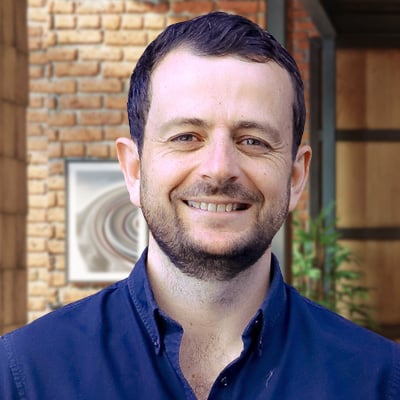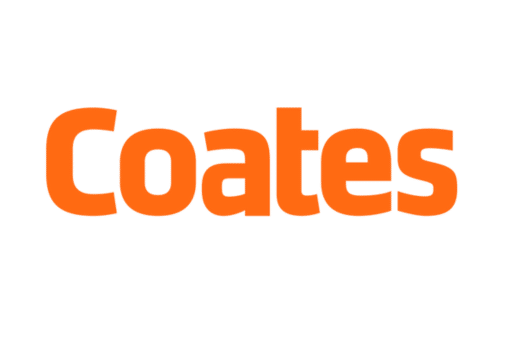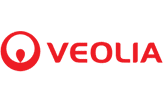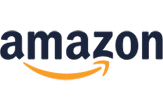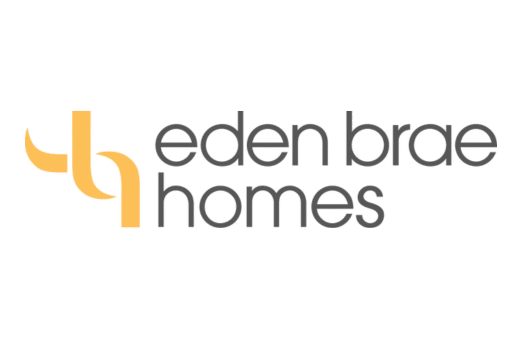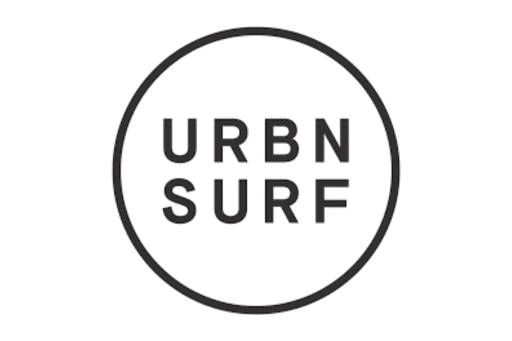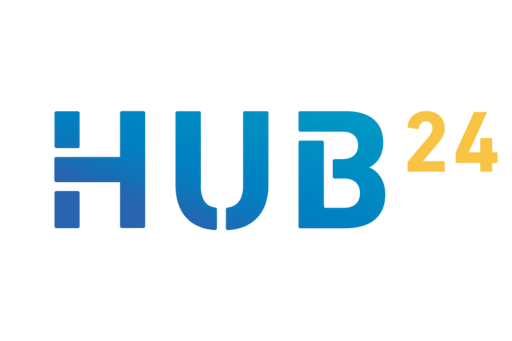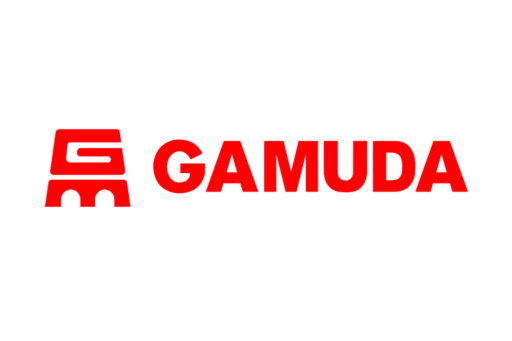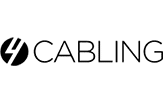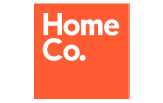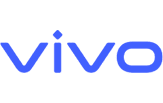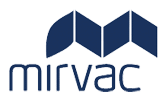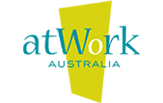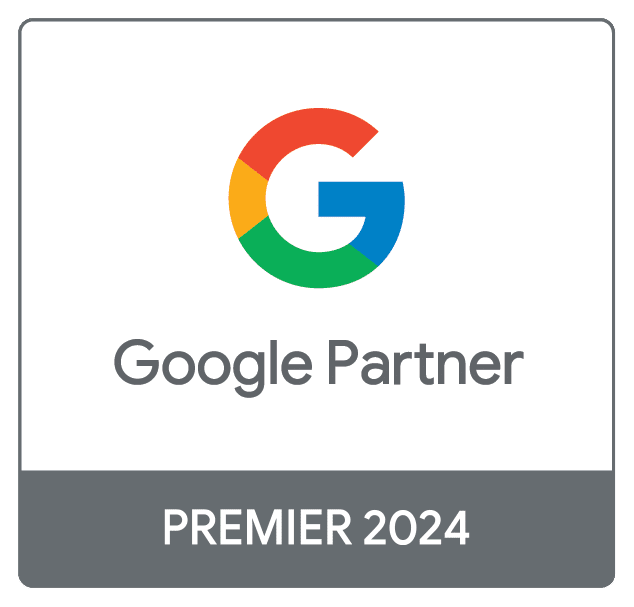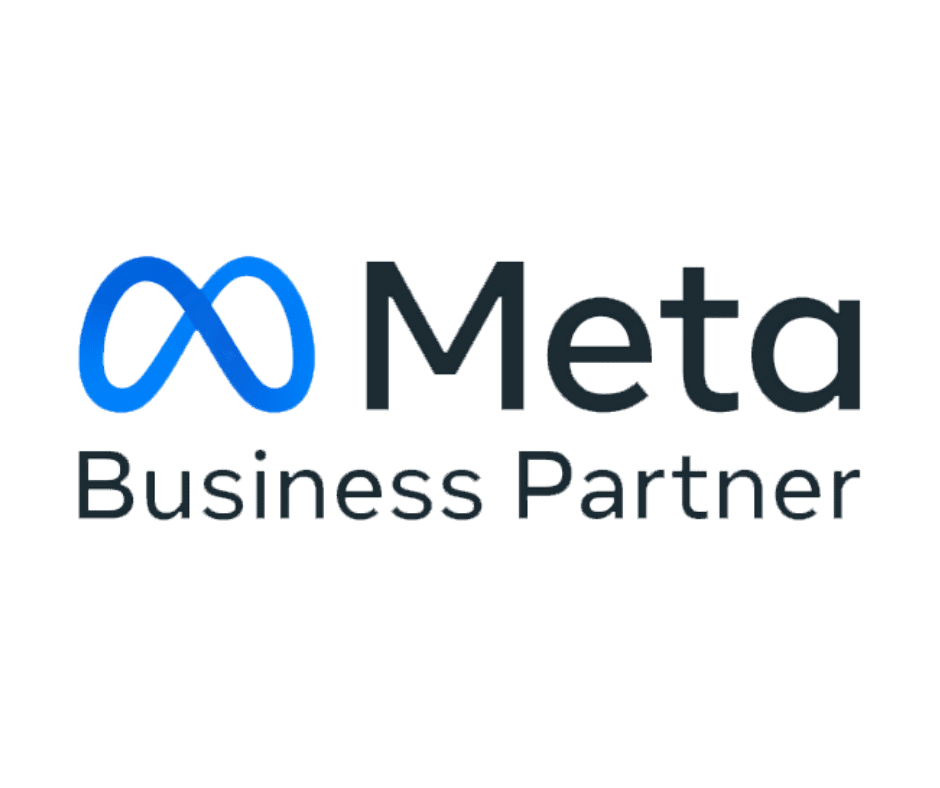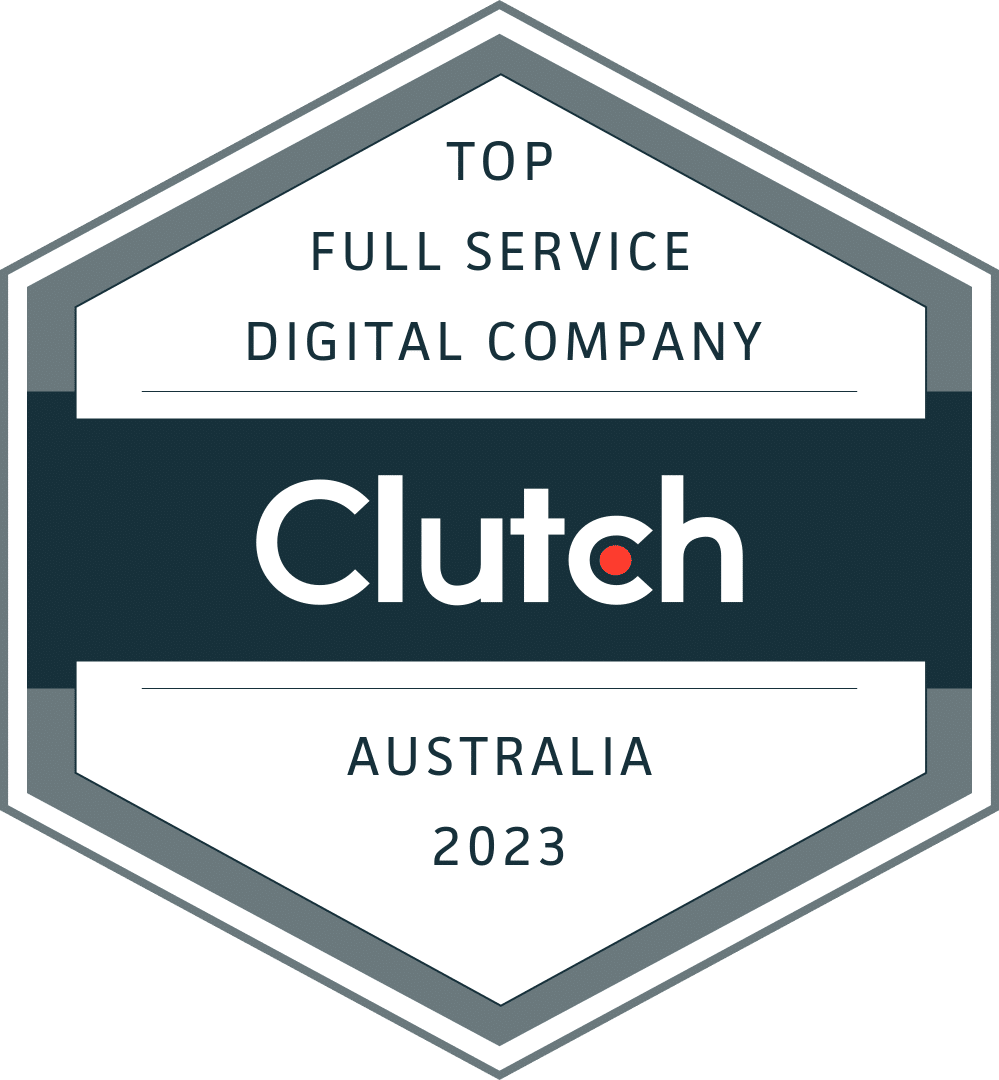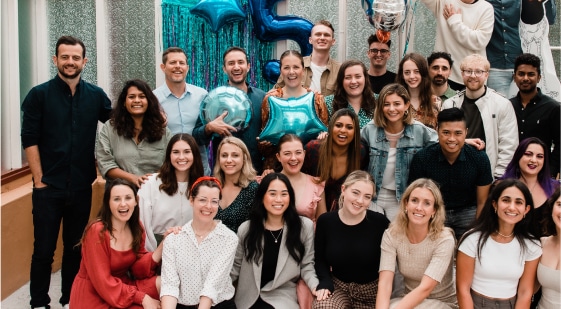The Growth of Out of Home For Australian Marketers
Episode Description:
Out of Home media spend in Australia is now over $1bn annually and it is one of the fastest growing media channels. oOh!media is the largest out-of-home company in Australia with more than 37,000 digital and static asset locations. Josh Gurgiel, Head of Creative for oOh!media’s content and creative innovation hub, POLY reveals the power of out-of-home media, the impact digitisation, and how your brand should be playing in this space.
Key Takeaways:
- How out of home has grown over the last 5-10 years.
- The impact of digitisation on ad placement, targeting options and generating brand awareness.
- The growing popularity of 3D animation.
- Moving from a ‘one to many’ approach, to ‘one to a better many’.
- Big opportunities that lie in the return to retail post COVID.
- Out of home is unblockable, unmissable and unskippable.
- Outdoor is a big driver of search.
- The hallmarks of good outdoor creative; simplicity, impactful colour and using 6 words or less in messaging.
Featuring:
About the Guest:
Josh Gurgiel’s obsessive engagement with Outdoor advertising makes him a hazard to anyone on the road. He has managed to channel this passion (read: obsession) into a successful media career, falling in love with the medium whilst working as a media planner at OMD and then Carat, before doubling-down and joining the Strategic Client Solutions team at oOh!media in 2017 where he would ultimately lead the team in the Southern markets in crafting dynamic and data-led OOH solutions. He spent a year as Head Media Thinker at full-service creative agency, Thinkerbell, but the allure of the creative possibilities of Out-of-Home was too strong, seeing Josh return in 2022 to serve as Head of Strategy, and more recently, as Head of Creative for POLY – oOh!media’s content and creative innovation hub.
Transcript
James Lawrence: Welcome back to the Smarter Marketer Podcast. I'm here today with Josh Gurgiel from oOhmedia!. Josh, welcome to the pod.
Josh Gurgiel: Thanks, James. Great to be here.
James Lawrence: Yeah, it's awesome to have you here. So Josh is Head of Creative for POLY. POLY is oOhmedia!’s content, creative innovation hub. oOhmedia! is the largest out of home company in Australia with 37,000 digital and static assets basically everywhere. I think the number I was looking at this morning was more than three out of four Australians will see one of your assets each day. It's retail centers, airports, train station, roadside. So when I thought of outdoor, I thought oOhmedia! And Josh is a heavy hitter over there. It's great to have you on the Pod.
Josh Gurgiel: Thanks, James. Yeah, awesome to be here. Look, I'm a hitter. Don't know about heavy. I try and hit how I can.
James Lawrence: You're smashing it over there. So I think just if we could kick it off with just talking a little bit about out of home.
Josh Gurgiel: Yeah, absolutely. As you said, oOhmedia! is the largest outdoor company in Australia and New Zealand. We have presence there. But, yeah, ultimately, all things outdoor, and as you mentioned, a real kind of variety of sites and spaces. I think when most people think of outdoor media, they typically go to the billboard, which really is that hero format and sort of everyone's first point of call. But, yeah, I mean, outdoor really spans so much wider than that, really. It's place based media that lives within our real world. So, as you mentioned, retail centers, university campuses, office towers, train stations, airports, and certainly bus shelters and street furniture. So just that kind of all encompassing, really, wherever there is kind of public space, our mission is to make that public space better through great media offering and great creative in and around these public spaces.
James Lawrence: There's been so much growth in the space right over the last kind of ten years. It's really interesting to see the top line revenue growth.
Josh Gurgiel: The last ten years really has been a boom. Well, certainly pre COVID was kind of a continual growth, and that was very much in line with the continual digitisation of the format. We really saw growth in terms of converting assets from that static, classic asset of 100% share of voice ownership and posters to more digitisation, which obviously brings naturally more revenue into the category and into the business. But certainly 2020 was an interesting time on the curve of growth, but it's been remarkable. I think ultimately everyone working within the category knew that we had to kind of ride that storm and naturally - kind of hard to sell outdoor media when no one's going outdoor. But the bounce back has been really profound and really encouraging to see people coming out of COVID and out of lockdowns and certainly here in Victoria, where I'm based, just really getting outside again and almost higher levels than they were previously. So it's been really promising for the format as well, to see that continual growth.
James Lawrence: Yeah, it's funny. I think we're chatting before the pod. Was going to say, I'm just a humble digital marketer, and you're like, I'm a humble outdoor marketer. And I think COVID was probably very different for us, where budgets are literally being moved from outdoor into digital because that's where people were right? They were stuck at home on their devices. And as the world's opened up, it's kind of good that normality has kind of been restored and behaviors are a bit more normal.
Josh Gurgiel: Absolutely. Just getting back to that equilibrium point where both formats can work hand in hand, I think, which is really nice. We certainly saw a shift towards those in home formats or kind of that more one to one. But that is the beauty, I guess, of out of home as well, is it really does have that power to reach audiences at scale in public spaces. So it's really promising to see people making the most of that and getting out once again.
James Lawrence: And you kind of touched on digitisation. What has been the trend there for listeners to the Pod, that everyone's a marketer on the listening to the Pod, sure, but may or may not have been exposed to outdoor, but we all would have seen it whether it's at a train station or certain billboards that are digital, when did it start? Where does it end? Does literally every single asset you have eventually become digitised, or is it only certain strategic sites?
Josh Gurgiel: It's a great question. And yeah, I think first and foremost - kind of off the bat - because we get to ask this a lot naturally as we continue to move to that digital first future and really heavily integrate more digitisation, not just in the assets themselves, but in our own systems and processes. Outdoor traditionally was maybe a bit more of an older school industry, and we certainly are really kind of moving in terms of programmatic buying and just those ways to access inventory, not just digital inventory, but just our systems being digitised. But what you will find and what we at oOh are really strong on is the fact that the network will never be 100% digitised. You'll never have just all of our 37,000 faces being digital assets because there is such a balance or a need for a balance between what we call classic static assets and digital. Classic really gives you that 100% share of voice, that ownability in those spaces, which for brands, particularly for product launches or just for real brand building exercises, having that ownership on prominent assets or in prominent locations uninterrupted. Because on a digital asset, you might have up to sort of ten advertisers on rotation.
Josh Gurgiel: But having that ownership there on a single site is so powerful and such a powerful branding tool for advertisers. But having said that, it's all about the balance. It's a matter of us being quite strategic with where are our classic static assets, and where will they always remain, and then what networks are we continuing to digitise to make sure that advertisers can reap the benefits, as I've sort of said, of digital inventory? So things like being more agile, running multiple creatives in a single campaign, not having to just have one creative up there using Motion, which I think is probably a little bit of an under index trend we see. Not enough advertisers actually realise that, well, what we say is if it's got a roof, it can move ultimately. Right? So if we have sites in shopping centers and on university campuses and airports and all that, all of those sites actually can run full motion creatives. So the ability to actually take assets from the kind of media mix, video assets, and use them out of home as well, is a huge benefit of digital media or digital out of home to really capture more attention. As we know, motion is just so powerful in those environments.
James Lawrence: Silly question, but is that literally just a practical consideration with rain and messing up signage?
Josh Gurgiel: No, it's actually council based. So, unfortunately, really the only digital assets that we can't run motion creative are those on roadside. So street furniture panels for safety. Exactly. The council, I was recently in Dubai talking beforehand, and clearly they don't have as stringent laws there because there was heaps of motion. And for a humble out of home offline guy like myself, it was paradise. Great creative apparatus.
James Lawrence: Other people want to go to the six star hotel and sit by the pool. You're just wanting to walk down the road, look at ads. Show me the assets!
Josh Gurgiel: But no, here there are a few exceptions. And we were talking again offline, we've obviously seen the rise again when we talk about digital out of home, the rise of 3D Anamorphic Creatives in Japan and Piccadilly Circus in London and New York. But certainly here we have a site on Burke Street, and that runs 3D creative as well. And because that's in a high pedestrian footfall area, it can run motion creative and 3D Anamorphic Creative. There are those exceptions.
James Lawrence: So basically, a business like yours would go to council and say, hey, we want this site to have movement computer.
Josh Gurgiel: Exactly.
James Lawrence: And make a case. I was in Japan recently, and in Shibuya in Tokyo, there's this unbelievable cat, this 3D cat. It's so good. I was going to say you have to see it to believe it, but it is on YouTube. So I think any listener that's interested in seeing where the technology can go, google 3D cat.
Josh Gurgiel: Shabuya. I think that's a great point, because when we talk about 3D, advertisers often ask us what's the benefits of it, why would we do it, and that sort of thing. Because realistically, you're creating an effect, and it really is living predominantly on a single site. But we look at 3D absolutely not in terms of the reach or even just the impact of that individual site, that individual execution. It really is all about the shareability. And you're talking about - go to YouTube. That's actually what we see. A big trend we're seeing is out of home, and definitely driven by the 3D technology. Now, out of home is being almost used as the canvas as just another kind of content option as part of a content strategy. For advertisers to use that awesome impactful creative and execution, to then live online and push through social and get really strong engagement and just add to the suite of content assets that are being created that live predominantly online, which is really where we see the power of these sort of executions living extending beyond the physical.
James Lawrence: That's really cool. Being a digital marketer, I presume that when we have a digital asset, we have better controls then about buying ad space. What are the kind of inputs there in terms of targeting and time of day and day of week? How granular can we go? What sort of options do we have now that we wouldn't if it was a static site?
Josh Gurgiel: It's kind of twofold. There's certainly the programmatic angle, which is continuing to grow, and we've sort of seen greater uptake globally than we have I think in the Australian market. We're still kind of developing in that space, but naturally, through programmatic buying, we do have that ability to be more time targeted, really to kind of hone in on audiences. And the site selection, therefore, is more dictated by those data inputs. The interesting thing, and whenever I'm asked about programmatic, I mean, the interesting thing from an oOhmedia! and really from the category at large is for a number of years now, we've really been honing our data offering, not necessarily from a programmatic perspective, but still from a data overlay of our entire network. We've actually just signed and launched a new data partnership with Flybys to tap into that data overlaid with our network to understand literally on a site by site level what audiences are best reached by individual sites. So we think about out of home, naturally, as a one to many media, but the way we had really looked at it for quite a while now is looking at how do we build a one to better many, making sure that we're still not just a finger in the air.
James Lawrence: I reckon that's a good one, let's go with it.
Josh Gurgiel: But actually looking at it from an audience filter and then again from a digital perspective; we have an entire digital team that works with clients to implement dynamic triggers based on weather or time of day or sort of social listening sentiment. Whatever it is, allows us to then dictate what creative is played and overlay certain elements within the creative based on certain dynamic data triggers as well. So again, that digitisation certainly has allowed us to be more dynamic with the creative as well as the selection of sites and locations.
James Lawrence: Yeah, I think I saw a piece around, I think it's Melbourne Airport, where you get off your plane and you're seeing an Uber digital ad showing estimated wait time once you get through and pick up your bag.
Josh Gurgiel: We use that example in a lot of our go-to market activity because it's such a powerful example. What I love about that is it's not just the simplicity, the replication of their interface on the site, in their ads. It immediately evokes that kind of mental trigger for the advertiser. It's such a distinctive feel for Uber. So using that in their creative was so powerful. But what I love about it as well. Was the utilitarian aspect of it. Again, if we think about outdoor as public space media, which it is, so it's incumbent essentially on us and on advertisers to use that in the most utilitarian way possible, to add value, that value exchange with the consumer. If we're wanting eyeballs, what are we giving in return? And I just love that they really didn't just - obviously it was beneficial for them - but it added a sense of utility in terms of taking them out of the app off the phone and in real life. Well, and it was just a smart use of a really contextually relevant environment.
James Lawrence: And it kind of shows, doesn't it, just how far the space has come. Like 20 years ago, you're getting a flat, static piece of creative and now you're getting something that's integrating real time data, giving a benefit to the prospective customer client walking through.
Josh Gurgiel: Exactly. It's fascinating.
James Lawrence: And then in terms of other changes in the space, like obviously digital, huge, 3D, other kind of, I guess, big trends, that if I'm a marketer out there and I want to just keep across of outdoor, what direction is it heading?
Josh Gurgiel: I think that there's a couple, definitely. We've just seen a continual rise of retail media and return to center has been really profound. And retailers just mobilising their own audiences is really interesting. But we're just seeing continual growth in the retail media space.
James Lawrence: What is that? Is retail media essentially any ads that we're seeing once we're in a retail context?
Josh Gurgiel: Yeah, I mean, it's sort of both. It's obviously ads within a retail sort of space, but also you're seeing retailers themselves really kind of mobilising their own spaces, their own physical presence, to actually enable advertising within those spaces as well. And we've actually launched what's called Rio, which is us essentially taking our infrastructure. We've got so much insight and experience in retail media space and then partnering with specific retailers to mobilise their own physical footprints, to use those again, to advertise and have infrastructure built within those spaces as well. So there's been a lot in the trade pressure around the rise of retailer media pivoting slightly, but what we're also seeing is, again, with the return to retail centers and the return to outdoor, we're actually seeing advertisers more readily owning spaces and really dominating spaces. So, for instance, in Melbourne Central, here in Melbourne, we own a lot of that media space and the way we're seeing advertisers really using every touch point, but to dominate the space. And again, for me, what it comes down to is just advertising out of home, right? And again, that interplay between the physical and the digital, the shareability. In this day and age, everyone's a content creator, right? Everyone's an influencer in their own minds, at very least. So we're all constantly on the lookout for content to share and to create. And so using out of home as the canvas. And we saw this with Barbie. Massively the virality of some of our Barbie street furniture, dominations and executions. People were literally going to the site just to take photos of themselves to share. And I think that's the power now we're seeing of out of home; really good advertisers understanding that out of home forms just another brilliant canvas that can really interplay between the physical and the digital and the online and domination I think and really smart utilisation, really visually stunning executions are what we're seeing living beyond the physical and online as well.
James Lawrence: And it kind of gives you that. One of the benefits or the pros of outdoor forever, both pre digital and now is that kind of credibility level. And that has been the knock on trying to build top of the funnel through digital, is that TV, out of home, does have that cut through because it is perceived as being more expensive, more effort in terms of creative, whatever else?
Josh Gurgiel: Generally, it's a bigger brand space, I think. It doesn't always have to be, but it does have that level of trust that is a bit different. It's psychological, right? It's perceived to be big. It's that know, you see a lot in Hollywood, right? Like if you're on a billboard, you've made it type thing. And I just think that same mentality does extend to brands as well. And I think there's an element of again, because out of home lives in our physical world. We're so tuned into our digital devices, right, but they're almost an extension of ourselves now. Whereas when we step away from that and great digital campaigns supported by brilliant assets and brilliant advertising that lives in the physical world, there is an element of heightened credibility. I agree there, and as well as the fact something we talk about from an out of home perspective of a benefit, is that out of home is unskippable. It's unblockable. The oOH! tagline is unmissable, right? It ultimately taps into quite different consumption behavior than we're now used to when it comes to a personal device. Both have equal merit. But understanding the power of tapping into that unblockability and then making sure as an advertiser and I obviously work in POLY, which is the creative team at oOh!, so we live and breathe all day, every day. How do you make sure that your advertising in out of home is as impactful and as noticeable and unmissable as possible? When advertisers get that right, there's a huge heightening of attention and credibility there by virtue of the format itself.
James Lawrence: That’s it. And we say to clients all the time, we will get better bottom of the funnel digital campaigns… we'll get better results from your social, get better results from your Google activity if you're doing top of the funnel stuff. And generally, that doesn't always mean digital, right? It means outdoor, it means TV. All those things help to build credibility, build trust, build awareness of you, and help to make your digital channels work harder for you?
Josh Gurgiel: Absolutely. Just a really healthy marriage. I think between the two and it was interesting. In COVID to see quite a pivot sort of away and then seeing advertisers returning pretty quickly because they just saw that there was that absence of really strong brand building, not just awareness, but real consideration driving. We talk a lot about outdoor as an awareness driver, but I fundamentally believe it's even more of a consideration driver, particularly because of the natural frequency when you're seeing things. What we're trying to do for our clients is build fame, essentially fame and familiarity. So seeing that within the world and really having brands be present in our minds in a credible format, I think really works to build that consideration. I had a funny experience, actually. I think that exemplifies that I was recently overseas, I was in Singapore Airport and I was moving through Singapore Airport and there was just that many ads for Chanel's new fragrance with Timothy Chalamet as their ambassador. And it was just Timothy Chalamet everywhere, sort of for Chanel. And it was so interesting for me because while I have never considered ever buying a Chanel fragrance, by the time I got on my flight, having been exposed to Timothy Chalamet that many times, chanel was so prevalent that for me, there's no question it's now within the consideration set. And I think for me, it was that frequency of exposure that being ever present is a real power of out of home. But I don't know if advertisers think enough about the power of frequency in out of home to position brands as an ever present presence in the mind of the consumer to drive that consideration and ultimately action, which is what we’re about.
James Lawrence: That segues really nicely into the kind of next thing I wanted to talk about, which know how small is too small? Because we've talked about Chanel, we've talked about Barbie. I'm in Sydney and I drive over the Anzac Bridge and Nike has taken over the huge billboard for the Matildas big brands, big budgets kind of thing. For listeners to the pod who might be in control of a smaller marketing budget. To your point, you need that frequency to kind of get that repetition into the mind of the prospect that, hey, we're here, we're real all those things.
James Lawrence: Examples of, I guess, smaller budgets, smaller advertisers that have done well with outdoor? And when do you get to a point where it's like, yeah, look, it's just not worth it, you should be putting your budget into something else?
Josh Gurgiel: I think it's an amazing question. I think what is representative of, is the fact that outdoor is not just for the million dollar club or those huge advertisers that are dropping huge coin in outdoor, but the greatest growth we've seen in our business is in the direct client space, right? Those smaller advertisers, SMEs and startups, they're the ones who are actually seeing more and more coming into the category because of just the natural scale that can be achieved and really quite efficiently through outdoor. And again, it's all a matter of a really healthy balance between your top and lower funnel activity. What we actually found a couple of years ago, we did a piece of research with analytic partners all around just ROI in out of home. Really trying to understand what are the greatest drivers of ROI in out of home and what it found particularly and specifically for advertisers with less than a million dollar total marketing budget anywhere, really down to quite small budgets. It was finding that out of home and digital were the actual best combinations beyond television and digital. It was actually those two that were working hand in hand. And it is because of that top funnel, efficient scale and reach that can be built through out of home and then that bottom of the funnel conversion and just far more targeted activity. And again, as I sort of mentioned, with out of Home, the beauty now is that with a strong data overlay, we're eliminating wastage. So it's about that better many. I think for smaller advertisers, it's just, again, understanding that it doesn't have to be all eggs in one basket. It's about being strategic with your objectives to understand, okay, how can I build really big, really strong reach, really quick in a credible format that's really going to make my brand feel bigger and feel more ever present, as well as then make sure that I'm having that kind of more targeted conversion to really close the loop. And I guess the last thing I would say is what we really have to remember from an outdoor perspective, really powerfully, is that outdoor is one of those formats that drives really strong search. And I think that's really important as well, particularly when trying to drive conversion, understanding the interplay between exposure and search, particularly in environments like office towers where you literally see it and you go to your desk, right, or certainly on the commute on the rail where you see it, and then you've got a bit of me time on the train. The interplay between search and outdoor I think is a real powerful driver of action as well.
James Lawrence: What are the types of decisions you're making there? So smaller budget, is it kind of deciding, well, we'll probably end up going more for these types of assets, we're going to be just in office towers or we're going to be just at one university campus, or are we playing Geo? Like, are we going, well, let's just start in Newcastle or Wollongong, go hard there, measure kind of uplifts that we get through digital and whatever. How does it kind of actually practically play out?
Josh Gurgiel: Yeah, I think, again, it definitely all comes back down to objectives and to audience, I think, as well, because that is the beauty of outdoor is it can kind of pivot between objectives. Obviously, when you have large format as an example, that's pretty broadcast, right? That's broadcast by nature, even with data overlays, it's essentially more of a broadcast medium. So you want to be using that and putting your eggs in that basket if that's the objective right - to really build brand and really get that out there. But as you say, if you're trying to target, let's say, a white collar audience, a business professional audience or a student, a Gen Z audience well, place based media like office towers or study, which is what we call our university campus offering, even airports, which really has that business and leisure traveler audience… being tactical with that and understanding the power of moments and mindsets and tapping into those particular mindsets. Like I say, it's not one size fits all. And I think from a strategy perspective, that's really key understanding. If we know that there's a really healthy balance between outdoor and digital, but then understanding from an outdoor perspective what am I trying to achieve through outdoor? And once we know that, then it's a matter of saying, okay, well, how much do I have to play with? And what's going to be the most efficient way to really make that last and spread that from my perspective with as much longevity as possible? Because that's where the power really is.
James Lawrence: And practically speaking, if I'm not a marketer in a bigger corporate with a big budget and dealing with one of the big kind of media agencies, I can go direct to oOhmedia! in this instance?
Josh Gurgiel: Absolutely.
James Lawrence: And we'll speak to a rep who can say for X amount of money, I understand you're trying to achieve X for Y amount of money, this is what I can get you and this is the minimum spend and all those types of things.
Josh Gurgiel: Absolutely. As I say, just from our business perspective as well, the direct area of our business is genuinely the area with greatest growth both in team and certainly in incoming. We're just seeing more and more advertisers coming to us directly. They might not have agencies, they might not be at that stage yet, or have chosen not to, and really have brought that capability in house. And so yeah, we have full team on hand who deal directly with those clients day to day in the exact same way as our agency teams deal with agency reps. What's really important, I think to know as well is, for instance, my team, we really work within the creative space. We're on hand as well and we deal a lot with direct clients in terms of providing education as to best practice design principles, how to maximise the impact of their out of home. We run workshops with them, ideation sessions with clients, but also assist with the creation of the creative itself or the production of creative executions and special builds. So for advertisers to be aware, there's a full team of kind of support partners on hand that actually are here to help, particularly those less seasoned in out of home, really maximise the impact of their spend. So yeah, it's pretty robust in terms of the support that we try and provide to all advertisers and certainly those who are new, because we appreciate that, as we say, it's a growing medium. It only, I think, represents about 6% or 7% globally of media spent. So whilst it feels big, there's so much growth that we're continuing to see and to extract from the market so very much here to facilitate as advertisers come more on board.
James Lawrence: Yeah, nice. In kind of researching for the pod, there's different studies out there, Australia, internationally, whatever else. But it seems like a lot of credible research in the space says that the effectiveness of an outdoor buy is kind of generally 40% driven by the creative. So obviously, where you're buying and the placement and all those types of things really important. But similar to digital marketing as well, right, creative matters. So what are those big considerations? Obviously, that is your bread and butter, right? You're in that team leading it. What are the hallmarks of good creative? I'm sure it's not all ridiculous 3D cats kind of falling off the side of a building. There's probably some fundamentals in there as well. But yes, I'd love to learn a little bit about that.
Josh Gurgiel: Absolutely. It's definitely not all cats, but it's a brilliant question and certainly something we deal with absolutely day to day. And I would say first and foremost, we actually conducted our own study. So 40% from the analytics partner study we did several years ago that came back was that was about 41% was creative. So actually, funnily enough, that study prompted the creation of POLY because we just saw there is such importance to help advertisers really get it right when it comes to what we're putting on in the outdoor space, what we see. Fundamentally, we conducted our own study using transactional data to really try and help understand or find the correlations of what are the creative attributes that really tend to drive sales uplift. And it's called Polygraph because everything we do has to have POLY in it. And what the Polygraph study found was, not surprisingly, it is all about simplicity in out of home, right? So whilst we usually, or once upon a time thought that seven words or less was kind of the Holy Grail of text within an out of home creative, what the Polygraph study actually found, when we looked at advertisers running certain amounts of words, it was actually six words or less. Those advertisers were actually attracting more sales and being more successful than those seven and more, which was just interesting.
Josh Gurgiel: So what it showed to us is this continual focus on simplicity, on use of impactful, color, and distinctive sort of brand assets. Making sure they really are the hero of the side and of the creative itself, making sure there's strong contrast, just all those kind of basic visual tenets that take your ad and understand that really within out of home space, on roadside particularly, the audience has about 3 seconds of engagement time, right? 3 seconds. Which is, to be honest, quite similar to a lot of digital as based on our natural behavior and scrolling and that sort of thing. But if you have 3 seconds to engage, right, what are the core messages really just distill down to the core? What are we trying to communicate? How are we ensuring that that message is really easily digestible and really clearly shows our brand? And how do we ensure that our key brand cues are really prevalent? Whether that's logo, iconic colors, packaging, making sure that's present and just ensuring that it's easily identifiable, easily understood. When we see subheadings and subheadings and taglines and this and search bar and this gathered all around, not as effective as those super clean, super clear, really powerful creative that is, to the point and really easily identifiable for the brand. Because ultimately, it's all also about how it works in the greater media mix. We don't want to think of outdoors as isolation because we know that it's used, as we've talked about, as part of a wider channel mix. So ensuring that there's consistency is also really important when it comes out to.
James Lawrence: I'm not sure if it was one of your assets or not, but the embodiment of that was a billboard with just the Barbie pink, not a single word and then just the date of the movie kind of release date.
Josh Gurgiel: What I loved about that example, I mean, the bravery of the pink is epic, right? And just so, so good. But we've talked a lot in our team about it, is that the key actually to that asset and to that creative was not the pink in my view. It was actually the typeface that they used, the iconic Barbie typeface that they had July 21. Because in the absence of that, sure you would have would have known it was Barbie, right? Because of the context of the wider Barbie verse that was going on. But the typeface actually again, leaning into that distinctive brand asset of the Barbie text, I think what really solidified that as a brilliant Barbie execution. So it's always thinking about every asset and every weapon in your arsenal to make sure it's distinctively of the brand.
James Lawrence: That's it, isn't it? And I think for marketers listening to the pod, some of you will have distinctive brand assets which do have cut through in whatever segment you're going after and others just won't, right? If you're a startup SaaS provider and you're wanting to kind of well, how do we play with outdoor? You're not going to take over a billboard with the corporate blue, whatever else. But to your point, let's not try to oversell the whole value prop and have 25 words we're trying to jam in there. Rely on simplicity and what's that next step?
Josh Gurgiel: And trust the audience. We often say just give the audience a bit, but also trust the intelligence of the audience. Trust if it's compelling, it will drive search, it will drive curiosity. And I think that's what a lot of out of home is about. It's about creating an aha moment, a bit of grabbing some attention and really inviting the audience in to be curious and to engage further with the brand.
James Lawrence: So I love those pillars, like around simplicity and 3 seconds and six words or less. And I presume a lot of it stays the same. But what are some of the differences or more nuanced things when it comes to digital out of home? Yeah, it's a great question and I would say it leans pretty heavily into context. Right? Because again, as we kind of talked about Uber example and it's not exclusively digital out of home because one of my favorite ads I think was Cooper's and they bought two sites right next to a Bow repairs sort of car repair shop I've seen.
Josh Gurgiel: Yeah. And the text was just never tires right? That is just God level creative.
James Lawrence: So simple.
Josh Gurgiel: So perfect. So it's the contextuality of the creative itself. And it's not easy. We don't pretend like it's easy. But taking the effort, particularly through creative teams, whether that's agencies or in house or working with us, to go. That extra mile to understand the context from a location perspective, right, of certain environments, or from a time of day and mindset perspective, or even just tapping into cultural topicality of what's going on. We've seen great examples. I think Lamb did it several years ago. Really honing in on elements in the news and really playing on them in their copy. When advertisers understand the context of the time, times and of the space that's, again, what we're trying to do is cut through. I always talk about the fact that consumers don't care. We're all consumers, right? We're people. We're all people with our own stuff going on. We don't care about advertising. It's not at the front of our mind. So we have to give audiences a reason to care, a reason to take notice. So the more we do that through context and through those aha moments, that's really where digital out of home, I think, and the ability to pull in more real time, more agile, creative, that's where the growth and the power that we're seeing that’s really cool.
James Lawrence: It's so funny, I have such varied guests on this pod from all different backgrounds and walks of life, and it's just so much of it always just comes back to put the market first, understand the market right message to the right person at the right time. It's all just these fundamentals basics.
Josh Gurgiel: Yeah, just the basics with lots of technical kind of interflaving between the two. That's right. Paddling under the surface. Paddling under the surface. But it is just those four basics.
James Lawrence: But it's easy to get kind of down in the weeds, isn't it, and try to put your 25 words onto the billboard instead of actually never tires.
Josh Gurgiel: And I think that the litmus test, again, is us. As marketers, we look and we think about the consumer as this elusive being, right, alternate being. But it's just us. I hate to say a survey of one, but as marketers, we constantly have to bring it back to the fact of as consumers, what gets my attention? What naturally will I and those around me care about and notice? That test, I think, always has to be applied.
James Lawrence: It's a good point. So, looking forward, where does out of home go? What does it look like in five years time?
Josh Gurgiel: Well, just 3D everywhere.
James Lawrence: Buildings… full immersion…
Josh Gurgiel: And to that point, it's interesting because we talk a lot about that, about scalability of executions like 3D, and you certainly won't see 3D everywhere, because that as an execution still is going to live on hero sites that really can match the impact of the execution itself. So I don't see that becoming just ubiquitous within what we will see. And what I hope we'll see is a greater uptake, particularly the capabilities of digital. So more full motion. I think on our network we see around 54% of creative run on full motion enabled assets, right? As I said if it's got a roof, it can move. Only about half of the creative run in those networks is full motion. So this is something we're really pushing to advertisers because we know and our polygraph study proved it that when advertisers used Motion absolutely, their performance went up. It was like 187%. It was insane. It just captures more attention. So more motion in the market I really see being utilised and again just greater utilisation of the dynamic capabilities as it gets easier to implement data feeds as we continue to digitise our systems and put more and more systems in place. To make it more self service for advertisers to be more dynamic with their creative and more real time. I really see the digital assets being more uniquely and dynamically used. Moving forward, I also hope to just see more and more interplay between online and offline, whether that's AR greater use of AR. I mean, if you would have told me that QR codes would come back five years ago, I really would have laughed in your face. But again, that interaction and that ability to invite the audience in when appropriate and in the appropriate environments and then using that to offer value is where I see advertisers can really play heavily in the space.
James Lawrence: Really interesting. Definitely. It's funny, isn't it? Because I think ten years ago you would have kind of gone, oh, outdoors a bit old school and whatever else. And now you look at it and you go, yeah, this is a massive growth area for marketers to stay on top of. Mate, it's been awesome having you on the pod. I always finish every episode with this question. What's the best piece of career advice that you give to an Australian in house marketer?
Josh Gurgiel: Oh, that's a great question. For me, it's just be enthusiastic, I think, about everything that you do, and if you're not learning or you're not feeling like you are enthused by what you're working on, well, it's time to find that. Because I think when you truly care about what you do and you truly love what it is you do, as the cliched saying goes, you don't work a day in your life. And I'm fortunate to have found out outdoor is a real sweet spot and love what I do. So, yeah, be enthusiastic at all times because that's what's going to get you out of bed every day and love what you do.
James Lawrence: It's a great answer. Good one to pass on to the kids. Thanks, mate.
